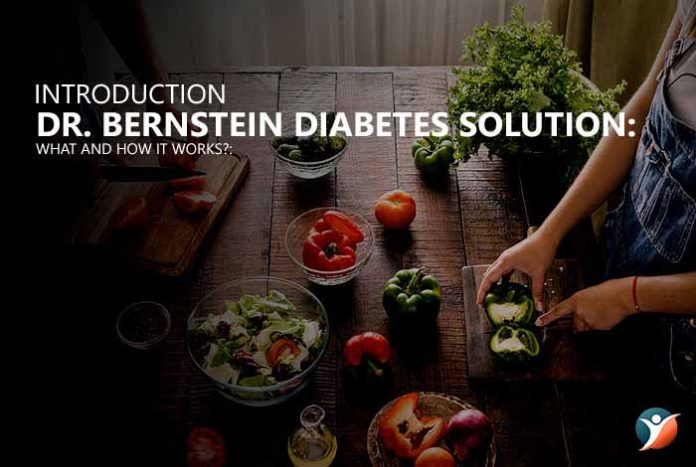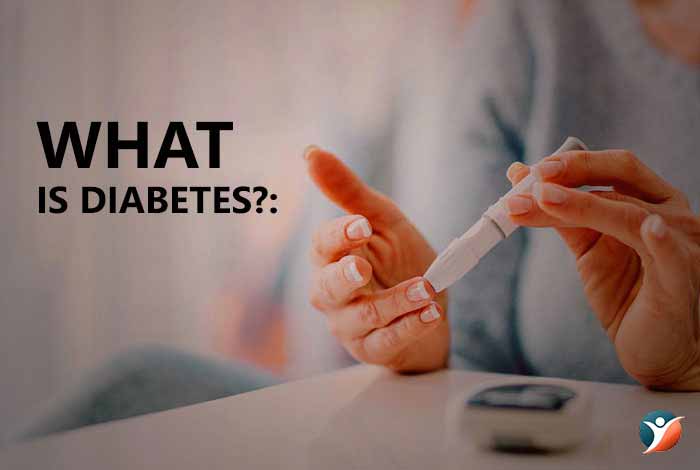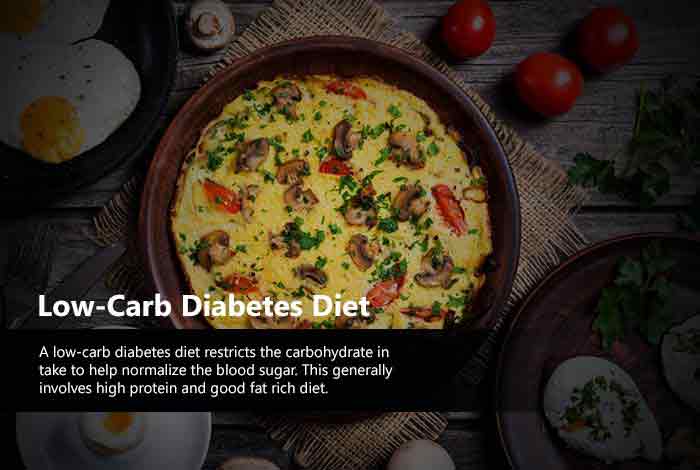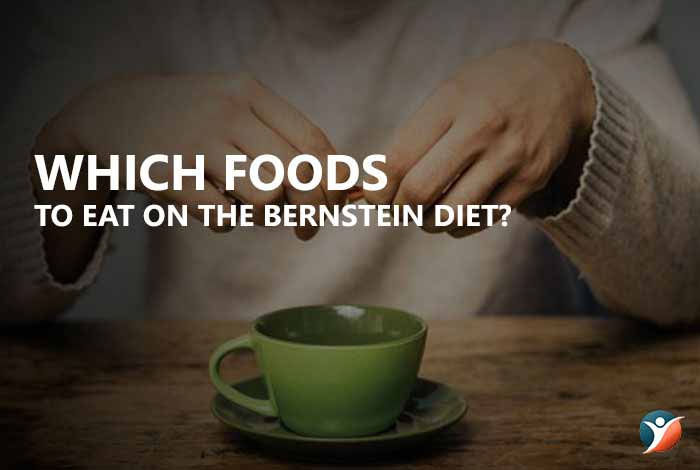
Dr Bernstein Diabetes solution is indeed the best one among all the diabetic diets and diabetes management plans out there. It involves consuming low-carbohydrate, moderate fat and high protein diet.
Getting diagnosed as a diabetic can be little discouraging and heartbreaking. But, Dr. Richard K. Bernstein’s diet has shown to normalize blood sugar levels like no other plan recommendation ever could.
Dr. Bernstein is indeed a legend and has tailor-made this diet plan with years of self-assessment and determination. Keep reading to know what Dr. Bernstein’s diabetes solution is and how it works. We assure you great health and normalized blood glucose levels upon following this incredible diabetes plan.
Table of Contents
- What is Diabetes?
- Why is it Important to Manage Diabetes?
- What Are All Diabetes Solutions Available in The Market?
- Dr. Richard K. Bernstein’s Story
- Why Dr. Bernstein’s Solution Is Better Than Other Inferior Solutions?
- The Nutrients in Dr. Bernstein’s Low-Carb Diet
- Which Foods to Eat on the Bernstein Diet?
- Which Foods to Avoid on the Bernstein Diet?
- Amazing Results You Can Expect by Following Dr. Bernstein’s Diet
- Conclusion
What is Diabetes?

Diabetes is a carbohydrate metabolism disorder where the body is either unable to produce insulin or does not effectively responds to it. The body hence fails to maintain proper glucose levels in the blood.
Insulin is a hormone secreted by the beta cells present in the pancreas. Insulin’s primary task is to stimulate the body cells to take up glucose for energy. Diabetics either have dysfunctional beta cells or their body cells are resistant to insulin. In both these cases, the sugar or glucose levels in the blood increase, resulting in high blood sugar. As sugar keeps on accumulating in the bloodstream, the excess sugar is excreted through urine.
Diabetes eventually causes increase in frequency of urination. As a result, you will feel thirstier. A diabetic is caught in this vicious cycle of increased thirst and frequent urination. And the fluctuating glucose levels put him or her under a constant health threat. Learn why it is important to keep your blood glucose levels under control.
Why is it Important to Manage Diabetes?
Off limits, blood sugar levels can lead to short-term health issues such as hyperglycemia (high blood sugar levels), hypoglycemia (low blood sugar levels), or in rare cases; diabetic ketoacidosis. If you don’t manage diabetes in the long run, your important organs like the kidneys, heart, nerves and eyes would get severely impacted. Heart diseases, stroke, vision problems, kidney disease and nerve problems might be experienced by people with diabetes.
The good news, however, is that keeping your blood sugar levels under control can help you in being healthy and preventing various health problems from occurring.
Let’s learn what all diabetes solutions are available to manage diabetes and prevent your blood glucose from skyrocketing.
What Are All Diabetes Solutions Available in The Market?

Diabetics have a number of ways to control their blood sugar levels. Besides physical activity and medications, the eating plan a person chooses plays a key role in the quantity of insulin required and blood glucose variations that occur throughout the day. The most popular diet plans for diabetes management include vegetarian, low-carb, ketogenic, carbohydrate counting and vegan.
Ketogenic Diet:

“Keto” diet focuses on ketone production by consuming low carb, moderate protein and high fats. For nutritional ketones to form, people need to restrict their carbohydrates under 30 grams per day.
The majority of calories in a ketogenic diet come directly from both animal and plant fats. You can consume additional fats throughout the day to feel satiated. Keto diet is inherently very low in carbohydrates but a low-carb diet might not always meet the ketogenic criteria.
Low-Carb Diet:

A diet that is low in carbohydrates is not a new treatment of diabetes. In fact, low-carb consumption was one of the first available treatments for diabetes much before injectable insulin was available. Consuming a low-carb diet is not a substitution for insulin, but lower carbohydrates consumption can help you in reducing the need of insulin and other medications. Dr. Richard K. Bernstein’s diabetes diet is one of the most followed low-carb diet plan for managing diabetes.
Vegetarian Diet:

Vegetarian diets can help in overcoming protein spikes and insulin resistance that is caused by gluconeogenesis (the metabolism of protein and delayed increase in blood sugar levels). Vegetarian diets have many variations:
- Pescatarian (includes fish and seafood)
- Ovo-Lacto (includes eggs and dairy)
- Lacto (just dairy)
Vegetarians also consume pasta, bread and standard groceries that are meat-free. They also consume a wide range of fresh fruits and vegetable.
Vegan Diet:

A vegan diet only includes plant-based foods, without any animal products whatsoever. This diet eliminates all the animal fats and proteins, it means no conventional dairy products and no eggs. Most other ingredients in other foods such as bread, pasta are also eliminated. Few people observe that they experience increased insulin sensitivity when they remove animal products from their diet. A vegan diet might increase overall carbohydrate intake as no low-carb animal products are consumed. People who practice veganism get their protein only from plant sources.
Carbohydrate Counting:
Carb counting is not exactly considered a diet plan but is an insulin treatment. It includes consuming your standard diet and adjusting your insulin only as-required. This might be quite difficult to estimate, especially when you snack or consume irregular meals.
There is nothing like “one-size-fits-all” when it comes to managing diabetes and figuring out the eating plan that suits all your needs. You need to find out what works best for you. We still advise you to consult your doctor before you make any drastic changes in your diet or exercise regimen.
Let’s understand why Dr. Bernstein’s diet is best than other available diabetes management plans.
Dr. Richard K. Bernstein’s Story
Dr. Bernstein was diagnosed with type 1 diabetes when he was just 12 years old in 1946. That period was commonly referred to as the “dark ages” of diabetes. Dr. Bernstein had to check his urine for presence of sugar by using a test tube that was pre-heated over a flame. He also needed to sterilize his glass syringes and needles by boiling them every day.
Within first two decades of his diabetes diagnosis, he experienced stunted growth and also developed various complications due to his diabetes. By then thankfully glucose meters were available in the market. After an initial struggle, he was able to normalize his blood glucose by glucose checks, exercise regimen and his diet. He noticed that most of his health complications either improved or reversed.
Dr. Bernstein tried to share all his ideas with the medical community but they rejected his ideas outrightly. He then decided to quit his job and went to a medical school at age 45. That way he could publish his findings and help people with type-1 diabetes. By the year 1983, he was a physician himself and was able to help other people with type-1 diabetes.
Dr. Bernstein is indeed an inspiration with all that energy and vitality he has even in his 80s.
Why Dr. Bernstein’s Solution is Better Than Other Inferior Solutions?
Dr. Bernstein’s diabetes diet is a low-carb, moderate fat and high-protein diet. He recommends that people must follow this diet as this diet maximizes chances of normalizing blood sugar levels.
While other diets specifically focus on losing weight as a key to managing diabetes, Dr. Bernstein’s diet can actually help you manage your blood sugar naturally. Most other diets focus on losing weight which might somehow improve your insulin sensitivity but the Bernstein diet can help you achieve close to normal blood sugar levels.
This diet includes one of the most groundbreaking ideas that was put forward by Dr. Bernstein and is known as “law of small numbers”.
According to him, one important aspect of this is the “law of insulin dose absorption”.
Each time you take insulin, a varying small percentage of insulin is not absorbed by the body, now this is both unpredictable and unavoidable. This implies that blood sugar levels will be a bit higher or lower than what you would have expected.
This law of small numbers also takes into consideration the “law of carbohydrate estimation”.
Dr. Bernstein observed that the U.S. Food and Drug Administration allows a plus or minus of 20 percent of error on labeling of product ingredients like carbohydrates. This significantly throws off carb counting for most of the people with diabetes.
Amid all these factors, Dr. Bernstein always recommends low-carb consumption and never administering more than 7 insulin units in a single injection. Let’s understand the fundamentals of this amazing low-carbohydrate diet by Dr. Bernstein.
The Nutrients in Dr. Bernstein’s Low-Carb Diet
Let’s take you through journey of a diabetic patient who followed Dr. Bernstein’s diabetic diet. Ryan Attar, now aged 37, was first diagnosed with type 1 diabetes back in 2007. At that time, he was serving in the United States Army as a Captain and was stationed overseas. After his diagnosis, he was subsequently medically discharged. Ryan eats a very low-carb diet as recommended by Dr. Richard Bernstein for “normalizing” his blood glucose levels. Attar feels that he was lucky enough to meet Dr. Bernstein and spend some quality time with him.
Ryan started following Dr. Bernstein’s diet four years prior to he met him in person. He asserts that his HbA1C levels are in the 4s, which is the normal and non-diabetic range. Now, this comes as a shock to most people who have diabetes.
Ryan shared what Dr. Bernstein recommended him to eat for normalized blood glucose levels.
Carbohydrates:
Dr. Bernstein advises restricting your carbohydrates to about 30 grams per day. He advises that a diabetic can consume 6 grams carbs in breakfast, 12 in lunch and remaining 12 in dinner. Carbohydrates are eventually converted into sugar and negatively impact blood sugar levels. Dr. Bernstein advises avoiding all grains, beans, fruit, starchy vegetables such as potatoes and artificial sweeteners.
Fat:
Dr. Bernstein believes that fat is not evil at all and it is required for survival as much of our brain is made from fatty acids. He further says that heart disease and obesity are more linked with too much carbohydrate consumption and not from excessive fat consumption.
Protein:
He advocates consuming plenty of protein as it is an important part of his low-carbohydrate diet. Although Dr. Bernstein explains that any protein serving consumed, a minor part of it will be always converted to sugar in the bloodstream but this would be minimal as compared to the impact on carbohydrates consumption.
Ryan went on incorporating the same in his diet and felt amazing both physically and mentally. It is time to know which food you must consume and which ones you should avoid while following Dr. Bernstein’s diabetes diet.
Which Foods to Eat on the Bernstein Diet?

Practically everything you eat will have some effect on your blood sugar if consumed enough. Take a look at the foods which are allowed on Dr. Bernstein’s diet. This is all what Ryan ate and is still adhering to this diet for normalized blood sugar levels.
Vegetables:
Most vegetables except those listed below in the No-No list are acceptable. As a rule, Ryan ate any one of the following: 2/3 cup of cooked vegetables, 1/2 cup of sliced or diced cooked vegetable, 1/4 cup mashed vegetable (cooked), or 1 cup of mixed salad.
Cooked vegetables eventually raise blood sugar faster than raw vegetables would as they convert to sugar easily. He also noted how certain vegetables affected his blood glucose. Ryan ate the below-mentioned vegetables:
- Asparagus
- Artichoke hearts
- Beet greens
- Bamboo shoots
- Bell peppers (green and red, not yellow) (either cooked or raw)
- Bok choy (Chinese cabbage)
- Brussels sprouts
- Broccoli
- Celery root (celeriac)
- Cabbage
- Collard greens
- Celery
- Dandelion greens
- Daikon radish
- Escarole
- Endive
- Eggplant
- Hearts of palm
- Kohlrabi
- Mustard greens
- Mushrooms
- Okra
- Pumpkin
- Pattypan squash
- Rhubarb
- Radicchio
- Snow peas
- Scallions
- Spaghetti squash
- String beans
- Summer squash
- Spinach
- Turnips
- Turnip greens
- Watercress
- Water chestnuts
- Zucchini flowers
- Zucchini
There are a few other foods that are allowed on Bernstein’s diet. These include:
- Moderate amounts of Meat, Fish, Seafood, Fowl and Eggs.
- Dash of butter or margarine.
- Plain whole milk yogurt which is unsweetened, unflavored and without any fruit.
- Pepper, salt, herbs and spices in moderate quantities.
- Unsweetened tea or coffee with just 2 teaspoons of cow’s milk. Certain artificial sweeteners can be used such as sucralose, saccharin and aspartame.
- Alcohol in moderation. Limited to just one drink each day or just one beer can.
- One aspartame tablet or any other sweetener to sweeten your milk, tea and coffee.
Which Foods to Avoid on the Bernstein Diet?

While it was initially bit hard for Ryan to avoid all the foods mentioned below, but he was determined to keep control his blood sugar levels. He avoided the following foods:
Sweets and Sweeteners:
- Powdered sweeteners except stevia
- Candies, especially those labeled sugar-free
- Honey and fructose Most “diet” and “sugar-free” labeled foods
- Desserts (except Jell-O gelatin without maltodextrin: not more than half cup per serving). He also avoided cakes, pies, cookies, tarts etc.
- Foods, products whose significant ingredient names end in -ol or -ose such as dextrose, lactose, glucose, mannose, mannitol, xylitol, sorbitol, sucrose, xylose etc. except cellulose, molasses, corn syrup, maltodextrin, etc.
Starchy or Sweet Vegetables:
- Beans such as lima beans, lentils, chili beans, chickpeas, sweet peas tec.
- Beets
- Corn
- Carrots
- Onions except when consumed in small amounts
- Potatoes
- Packaged creamed spinach
- Parsnips
- Cooked tomatoes, sauce, paste and raw tomatoes except in very low quantities
- Winter squash
Fruit and Juices:
- All fruits (except avocados)
- All juices (including both tomato and vegetable juices)
Dairy Products:
- Milk
- Sweetened and low-fat yogurts
- Cottage cheese (can be consumed in very small quantities)
- Powdered milk substitutes
- Canned milk concentrate
- Coffee lighteners
Grains and Related Products:
- Wheat, barley, rye, corn, and all the lesser-known grains, such as quinoa, kasha and sorghum
- White, wild rice, brown or rice cakes
- Pasta
- Breakfast cereals
- Pancakes
- Waffles
- Bread, crackers, and all other flour products
Prepared Foods:
- Most commercially available prepared soups
- Packaged “health foods”
- Snack foods (including nuts)
- Balsamic vinegar
Having discuss what all a diabetic need to eat and avoid, let’s learn results Ryan had after he started following Dr. Bernstein’s diet.
Amazing Results You Can Expect by Following Dr. Bernstein’s Diet
To understand how HbA1c levels help in determining diabetes, let’s understand what they mean.
| HbA1c (%) (mmol/L) | What It Signifies |
| 4.5-6.4 | Excellent Level |
| 6.5-7.0 | Good Level |
| 7.1-8.0 | Acceptable Level (in certain cases) |
| > 8.0 | Poor Level |
Now after following Dr. Bernstein’s diet, Ryan had his levels around 4. This means he practically was in the excellent level, where a person is considered normal and non-diabetic.
Moreover, he felt more energy and vigor when he started following this diet plan.
His blood glucose level came down to normal levels, whenever he checked his blood glucose levels.
Ryan felt at peace with diabetes and eventually is leading an almost normal life with diabetes. He believes it is all because of Dr. Bernstein’s diabetes management program.
Ryan felt that this diet program only worked well for type-1 diabetics but it is never enough to mention that this diet worked excellently well for type-2 diabetics as well. Now, that makes it the best diabetes diet program for managing diabetes.
Conclusion
Diabetes can be little heartbreaking when you really don’t know how to manage your skyrocketing sugar levels. Thankfully, a diabetic can effectively manage this condition and can prevent all the health complications. A marvelous and efficient diabetes management program by Dr. Bernstein can help in normalizing your blood sugar levels.
If you read this article, you would have seen how former U.S. Army Captain Ryan Attar got amazing results by following the Bernstein’s diet. He was fortunate enough to meet Dr. Bernstein in person and get first-hand details of the plan from the legend himself.
Did you enjoy reading our article? Did you follow any recommendations given by us? Drop your feedback or advice in the comments section below. We will share more updates on diabetes management with you soon. Keep looking this space for more information.




